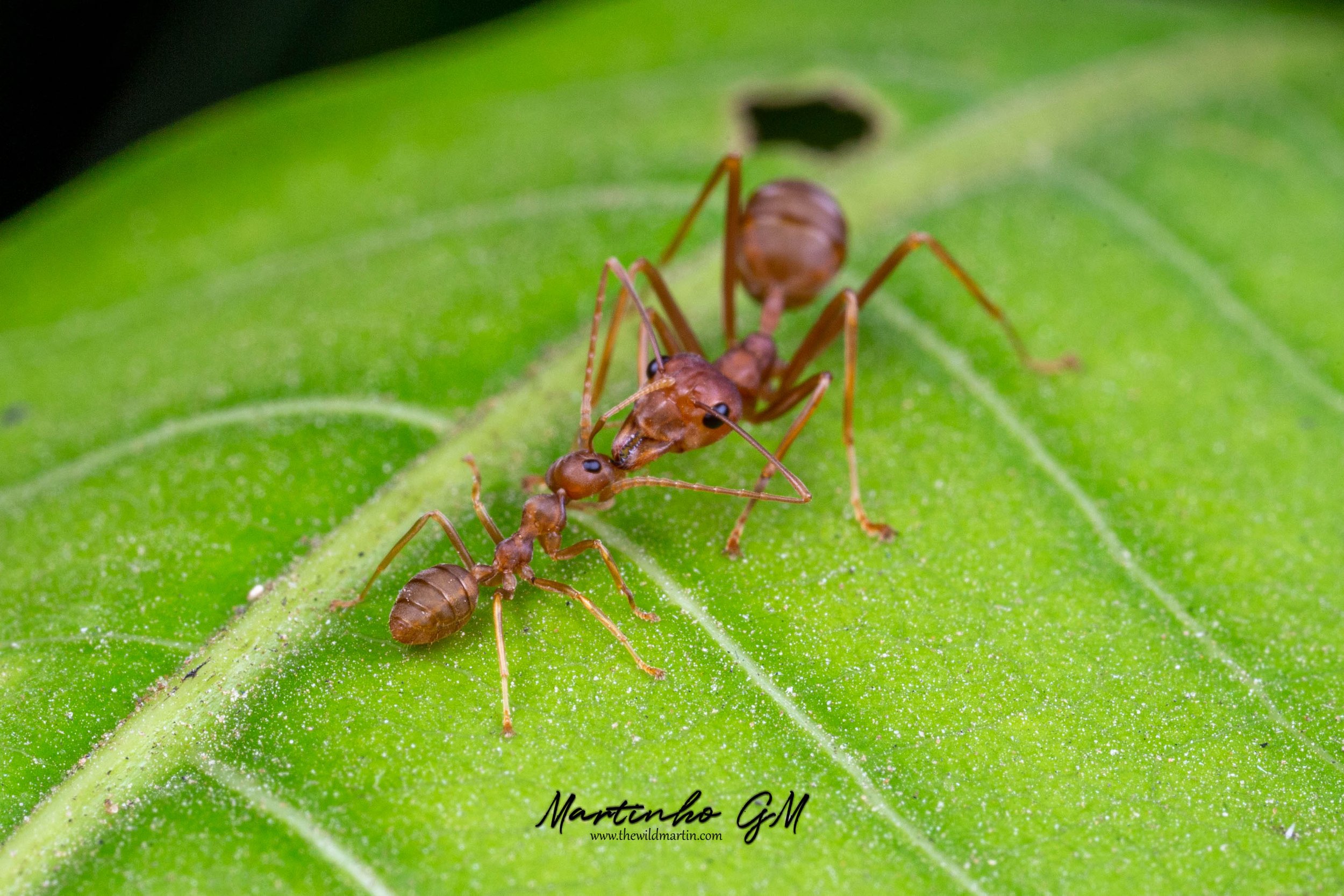Oecophylla
also known as Weaver Ants, they live in trees (they are obligately arboreal) and are known for their unique nest building behavior where workers construct nests by weaving together leaves using larval silk.
Colonies can be extremely large consisting of more than a hundred nests spanning numerous trees and containing more than half a million workers. Like many other ant species, weaver ants prey on small insects and supplement their diet with carbohydrate-rich honeydew excreted by small insects.
Weaver ant workers exhibit a clear bimodal size distribution, with almost no overlap between the size of the minor and major workers. The major workers are approximately 8–10 mm in length and the minors approximately half the length of the majors.
Major workers forage, defend, maintain, and expand the colony whereas minor workers tend to stay within the nests where they care for the brood and 'milk' scale insects in or close to the nests.
Weaver ants vary in color from reddish to yellowish brown dependent on the species. Oecophylla smaragdina found in Australia often have bright green gasters.
Weaver ants are highly territorial and workers aggressively defend their territories against intruders. Because they prey on insects harmful to their host trees, weaver ants are sometime used by indigenous farmers, particularly in southeast Asia, as natural biocontrol agents against agricultural pests. Although weaver ants lack a functional sting they can inflict painful bites and often spray formic acid directly at the bite wound resulting in intense discomfort.
Oecophylla smaragdina Queen
Oecophylla smaragdina Queen caring for her brood
Oecophylla smaragdina Queen
Oecophylla smaragdina worker
Oecophylla smaragdina Queen
Oecophylla smaragdina worker
Oecophylla smaragdina workers in the weaving process
Oecophylla smaragdina Queen caring for her brood
Oecophylla smaragdina workers tending for each other
Oecophylla smaragdina worker
Oecophylla smaragdina Queens developing new colonies
Oecophylla smaragdina worker
Oecophylla smaragdina workers in the weaving process
Oecophylla smaragdina new nest
Oecophylla smaragdina worker threatening
Oecophylla smaragdina worker in defensive position















